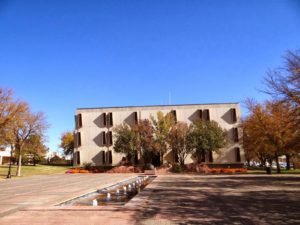The agents of change on the Amarillo City Council have made their mark.
Some of it’s been good. Some of it’s been, well, not so good.
I’m waiting for the proposal that will tell me these individuals really meant it when they campaigned for election to the council in 2015.
It involves the city’s at-large voting plan.
Perhaps you know how it goes these days. All five City Council members stand for election every other year. The next election date occurs in May 2017. They’ll all get to run for re-election — or “election” in the case of new Councilwoman Lisa Blake, who was just appointed to the spot vacated by Dr. Brian Eades.
What might the change involve?
Let’s try this: Expanding the council to seven members. Then let’s try electing four of them from voter precincts, dividing the city into equally apportioned quadrants. Then we can elect two council members at-large, along with the mayor.
The debate in Amarillo over single-member districts has been an all-or-nothing proposition. Those who favor changing the system seem fixated on the notion of electing all four council members from districts, having them represent their own neighborhoods. They’ve never seriously discussed the idea of expanding the body and developing a hybrid system that blends the at-large system with their preferred method of electing council members at-large.
Back in the old days, when I was working for The Man, I argued that the current at-large system works well for the city. My view on that has, shall we say, “evolved” since I’m now writing for myself. It’s not that it doesn’t work well; my view now is that some tinkering could make it work better.
Each quadrant could be divided among equal numbers of residents. It would require some finely tuned research to ensure two things: that each section has roughly the same number of voters and that they all represent a “community of common interest.”
They need not be gerrymandered beyond all that is reasonable, the way the Texas Legislature rigs the apportioning of legislative and congressional districts.
A hybrid voting plan has another consequence. It gives the mayor and the two at-large council members additional power by virtue that they would represent the entire city while their colleagues would represent roughly a fourth of Amarillo.
I saw it work in Beaumont, where I worked before moving to the Panhandle in early 1995. Yes, there were occasional disputes among ward representatives over whether a city policy would benefit their particular section of the city. The at-large representatives, though, acted as a bit of a leavening agent to the debate; they could seek to soothe hurt feelings.
I do not want to reveal any names, but one of the new Amarillo council members has told me he intends to propose a change to the city charter that would call for changing the manner in which we elect our governing City Council.
The city is continuing to grow. It is continuing to diversify along ethnic, racial and socio-economic lines. It is continuing to require a little more nuance in the way it is governed.
So far, this council member has been silent.
Let’s have this discussion. Now. Shall we?
